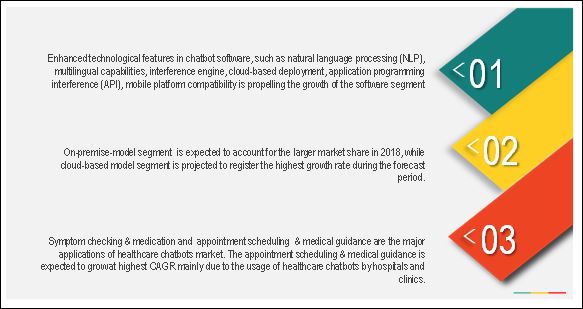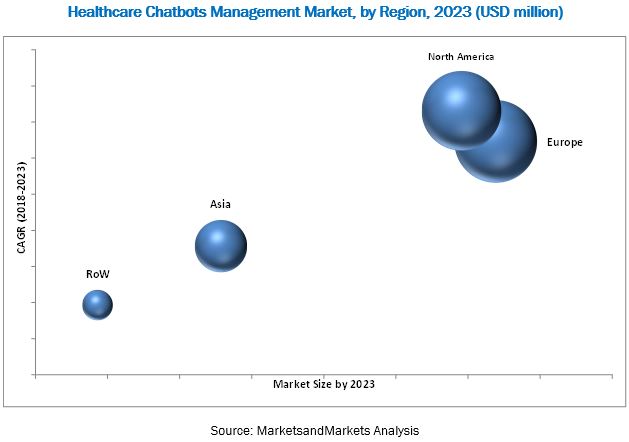The healthcare chatbots management market is projected to reach USD 314.3 million by 2023 from USD 122.0 million by 2018, at a CAGR of 20.8% during the forecast period.

The growth of the healthcare chatbots management market can be attributed to rising Internet connectivity and adoption of smart devices, and the need for virtual assistance.
Download FREE Brochure @ https://www.marketsandmarkets.com/pdfdownload.asp?id=27837519
Various prominent players are focusing on adopting inorganic growth strategies such as agreements and partnerships to ensure sustainability and growth in this highly competitive market. This helps companies operating in the market enhance their product portfolio, expand their customer base, and cater to the unmet demands of their customers.
Some of the recent developments in this regard are listed below:
- In June 2018, Bupa, an insurance provider, entered into a partnership with Babylon to provide artificial intelligence-powered health services to all its corporate business clients. End-users can access around-the-clock health advice through Bupa in the UK.
- In May 2018, MD entered into a partnership with BMJ Best Practice. According to the partnership, the medical data used by Your.MD’s AI algorithms will be validated by BMJ best practices to provide data accuracy to users.
- In May 2018, Sensely entered into a partnership with NAS to deploy Sensely’s virtual health assistant technology to the NAS member ecosystem as a means of boosting engagement and providing a more efficient communication channel.
Based on component, the market is segmented into software and services. The services segment is expected to grow at a higher CAGR during the forecast period as compared to the software segment, due to the recurring need for services such as software upgrades and maintenance.
Based on deployment model, the healthcare chatbots market is segmented into on-premise model and cloud-based model. In 2018, the cloud-based model segment is projected to grow at a higher growth rate during the forecast period as compared to the cloud-based model segment. Cloud-based healthcare chatbot solutions are sold on the basis of subscription, ranging from one month to multiple years, and these solutions do not require significant setup charges. Moreover, the maintenance and support service charges are included in the subscription fees, which make these solutions more affordable for customers. These factors are driving the cloud-based model segment.
Based on application, the healthcare chatbots market is segmented into symptom checking & medication assistance and appointment scheduling & medical guidance. In 2018, the appointment scheduling & medical guidance segment is expected to grow at a higher CAGR during the forecast period as compared to the symptom checking & medication assistance segment, mainly due to the growing usage of healthcare chatbots by hospitals and clinics.

By region, the healthcare chatbots market into North America, Europe, Asia, and the Rest of the World (RoW), the healthcare chatbots market in North America is expected to grow at the highest CAGR during the forecast period. Factors such as the growing number of therapy chatbots, increasing adoption of smart devices, rise in venture capital investments to develop advanced chatbots, availability of technologically advanced chatbot solutions, presence of a well-developed healthcare IT infrastructure, and presence of several key market players are driving the growth of the healthcare chatbots market in North America.


